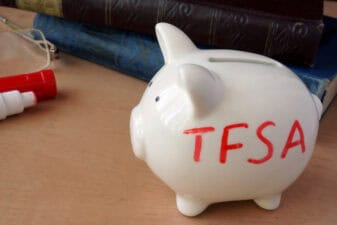If you want to retire rich, tax planning should be a key component of your strategy. Not everybody can pick investments that outperform, but anybody can lower their tax rate if they plan properly. Tax planning is therefore one of the most important aspects of retirement planning. It’s one of the few parts of financial planning that you have some control over, and one that isn’t subject to market risk. With that in mind, here are three tax tricks you can use to retire rich.
Trick #1: Hold dividend stocks instead of bonds
One of the best ways to retire rich is to hold dividend stocks instead of bonds. Not only do stocks perform better than bonds over time, but dividends also get better tax treatment than bonds do. Eligible dividends have a 15% credit applied to them. Bonds are simply taxed at your marginal tax rate. So, you pay a lot less tax on dividends than on bond interest.
Let’s imagine that you held $100,000 worth of iShares S&P/TSX 60 Index Fund (TSX:XIU). That’s a Canadian ETF with a 2.5% dividend yield. You get $2,500 a year in dividends back on a $100,000 position in it. To calculate the tax savings on that, you first “gross up” the $2,500 by 38%. That takes you to $3,450. Then you take 15% of that, which is $517.5. That’s your tax credit. You deduct that amount from whatever tax you’d normally pay on income. So, if you would ordinarily pay $1,017.5 on $2,500 worth of income, you’d only pay $500 on that much dividend income from XIU.
Now, let’s imagine you held a GIC that was going to pay you $2,500 plus principal at the end of the year. In this scenario, you’d pay your full tax rate on that $2,500. If, for example, you’d pay $1,000 in marginal tax on employment income, you’d have to pay that much tax on the GIC. So, dividends from stock ETFs like XIU are better for taxes than bonds.
Trick #2: Wait as long as possible to withdraw from your RRSP
Another good strategy to lower your taxes is to wait as long as possible to withdraw from your RRSP. We all know about the tax breaks that come from contributing to RRSPs. But fewer people know about the importance of waiting until old age to withdraw. If you wait until well after your retirement to withdraw from your RRSP, you’ll pay much less tax on the withdrawal. So, it pays to wait.
Trick #3: Sell your losing stocks at the end of the year
Last but not least, if you cash out any gains on stocks in the run of a year, you might want to sell your losing positions as well. This is a strategy known as tax-loss harvesting. You reduce your capital gains tax for a year if you report capital losses as well. So, if you gained $10,000 buying and selling Shopify stock, you could reduce the tax on that stock to $0 by selling another stock that lost $10,000. This is an easy way to lower your tax bill. But you need to sell the losing stock by the end of the same year to make it work. Otherwise, you’ll have to wait another full year to claim the capital loss.








